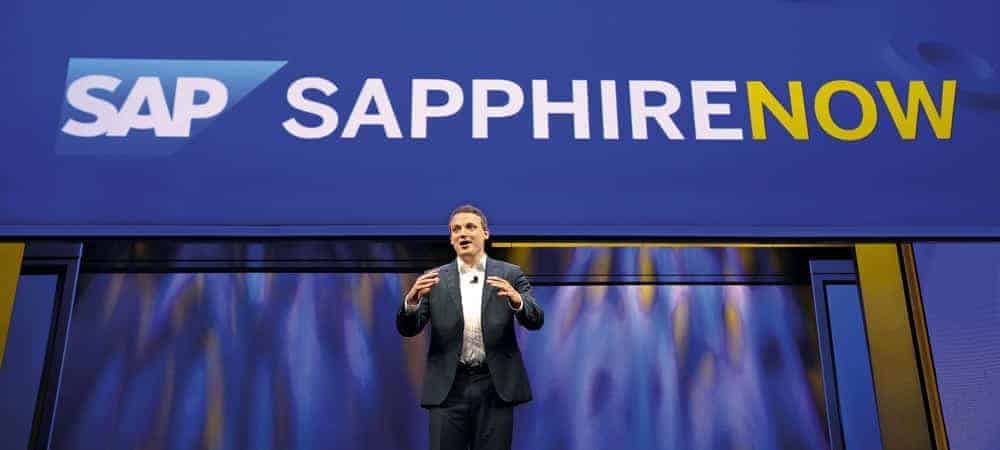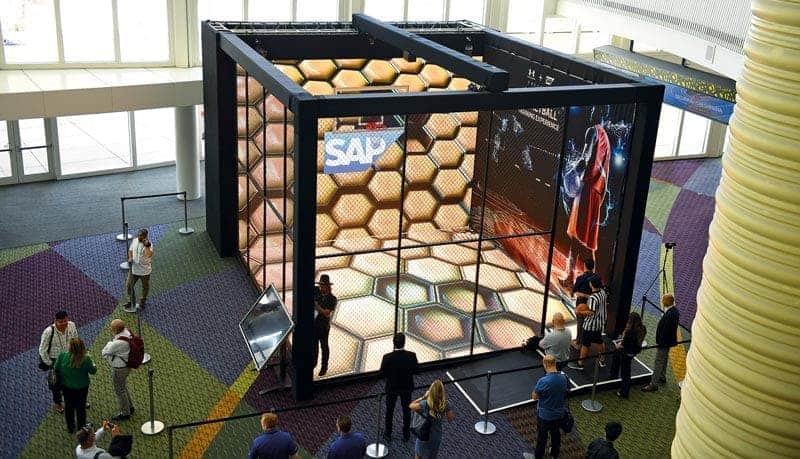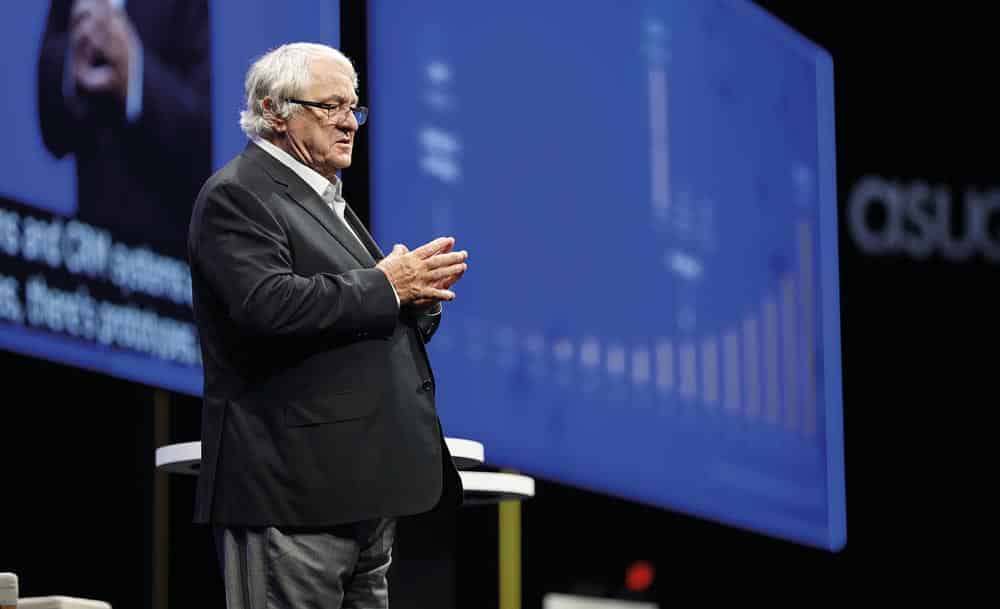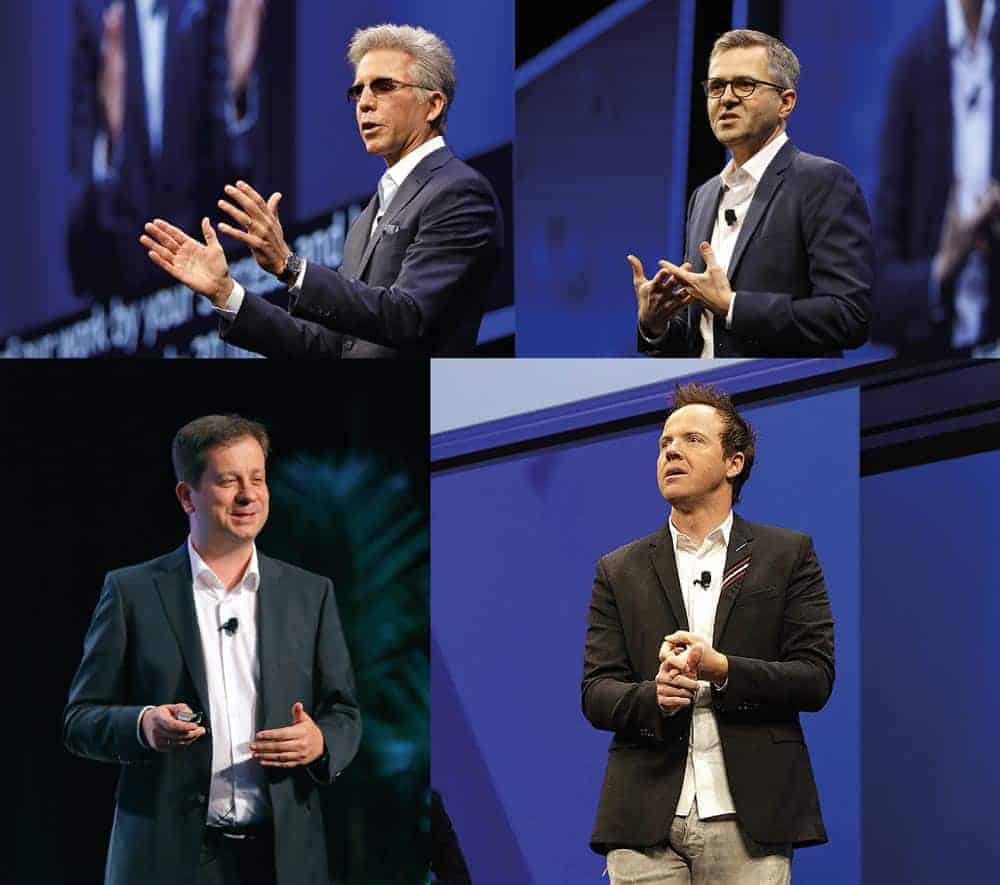Sapphire 2019 Orlando: Was there something?


Expectations were high, the Sapphire result modest: Professor Hasso Plattner began his whimsical appearance at Sapphire with the remark that his low-cost keynote would now follow SAP CEO Bill McDermott.
The day before, McDermott stood on the Sapphire stage and promised the existing customers who had come to the event a fantastic future. What shaped the entire Sapphire most were the visions and strategies of the SAP board members, because there was little in the way of concrete information.
Everything will get better, promised Bill McDermott and Executive Board member Christian Klein. For a long-standing SAP customer, these promises are naturally hard to believe, because the entire SAP cloud business has lost its mastermind with the departure of CEO Rob Enslin to Google. Now three members of the Executive Board have to take care of this SAP construction site: Christian Klein, Jennifer Morgan and Jürgen Müller.
Things are not looking good in the SAP back office and behind the Sapphire stage. CFO Luka Mucic had to pull the ripcord and announce a second Capital Markets Day in New York for this year. An absolute and far from planned novelty at SAP.
Hasso Plattner's sarcastic criticism of the previous speakers was thus only justified: He would now be giving a low-cost keynote without the support of his long-time partner and Chief Technology Officer Bernd Leukert. SAP's new Chief Technology Officer Jürgen Müller does not yet seem ready for the big Sapphire stage.
Even Plattner could not escape the general Sapphire trend of "a promise for the future". One of his favorite words was "field hockey stick". With this, he suggests that SAP is currently still in a self-discovery phase after acquisitions such as Callidus and Qualtrics, and that the Hana database could become a platform for the "intelligent enterprise.
If SAP does its homework in the coming years, the revenue, margin and share curve could take off like the shape of a field hockey stick. But that is just a promise for the future.

Even the benevolent SAP user group DSAG sees the present as still full of unsolved challenges.
"Ariba, Hybris, Concur, Fieldglass, Callidus and most recently Qualtrics: SAP's acquisition policy in recent years has led to a massive need to bring systems and master data together. We see that the solutions acquired from SAP still involve certain integration difficulties.
We have already communicated to SAP that the integration of the individual components is not yet satisfactory. From our point of view, there are indications that SAP is already working on further integration and, as announced at Sapphire, is offering an initial solution in the area of customer management with the Customer Data Cloud."
said DSAG CEO Marco Lenck, commenting on the announcements in Orlando.
Definitely like a field hockey stick, the global data volume will develop. Big Data overtaxes the Hana database concept, where the paradigm is that all data is in main memory. But SAP has taken precautions: With the purchase of Sybase in 2010, SAP became the owner of the ASE (Adaptive Server Enterprise) database, which shows a similar architecture as Hana, but is hard disk oriented.
The combination of Hana in-memory computing and Sybase ASE can now be used to build very large, hybrid database systems for the coming Big Data. With the Hana platform, the existing SAP customer then gets the best of both worlds: fast in-memory computing and inexpensive disk storage space.
Cloud integration and databases are just two of the many construction sites that Plattner sees at SAP, and he hoped that SAP employees would leave their comfort zone and air-conditioned offices and get to work. One aid, according to Plattner, could be the acquisition of Qualtrics.
With this software platform, it should be possible to get very fast and precise feedback from the market. This would then make it possible to better plan one's own development work. In any case, Plattner has called on his CEO from the Sapphire stage to significantly increase the speed of innovation.
In the future, Hasso Plattner sees SAP's existing customers predominantly in the public cloud, with a continuous, invisible release transition from Hana to S/4 to Qualtrics. It was hard to build SAP, Plattner said, and it will be even harder for employees, he predicted.
Do you still know SAP R/2 or R/3, R/3 Enterprise (version 4.7) and ERP/ECC 6.0? Existing SAP customers would be well advised to get out the history books to understand the many hints and anecdotes from SAP Supervisory Board Chairman Professor Hasso Plattner.
Plattner justified the global layoffs at SAP by citing the need to get rid of old burdens in order to bring new developments to market more quickly. SAP CEO Bill McDermott and Plattner call it reorganization.
But Hasso Plattner emphasized in his Sapphire keynote and at the subsequent press conference that obviously the successful ERP concept (R/2, R/3 and ECC 6.0) of the past cannot be a basis for Hana, S/4, BW/4 and C/4 in the public cloud.
Plattner wants his CEO Bill McDermott to create a new SAP in the public cloud with short innovation cycles and continuous maintenance.
What Plattner called for at Sapphire in Orlando is known in the SAP community as Greenfield: The release change to Hana and S/4 takes place in the greenfield and without legacy. This makes it much easier to get the complex construct of Hana and S/4 up and running.

And with the greenfield approach, you don't need the experienced employees from the past that Bill McDermott is currently throwing out the door worldwide. The existing SAP customers who came to Orlando do not agree at all with this greenfield approach.
Anyone who has successfully operated an SAP ERP system for many years has accumulated a very valuable treasure trove of data, which should of course also be available in a new S/4 system. The experts also call the smooth transition from R/3 to S/4 Brownfield and you can take all the important data with you.
Sapphire 2019 in Orlando was the big stage for Qualtrics founders Ryan Smith and Jared Smith. SAP CEO Bill McDermott never tired of praising himself for being able to acquire Qualtrics for eight billion US dollars even before a planned IPO.
Many Sapphire customers were impressed by the Qualtrics presentation by Ryan Smith during the McDermott keynote. Professor Hasso Plattner was also pleased with the acquisition and had a very animated chat during his keynote with Jared Smith, Ryan's brother.
Bill McDermott and Hasso Plattner emphasized the necessity and brilliance of the Qualtrics acquisition both in their respective keynotes and in the subsequent press conferences. What both failed to tell the audience, however: SAP's latest 2018 annual report clearly shows that SAP itself needs Qualtrics far more urgently than perhaps the SAP community and a nascent SAP's CRM suite.
Qualtrics is a system that can hold a mirror up to you. The software analyzes a wide variety of data sources and evaluates them in terms of popularity, acceptance, satisfaction, loyalty, and so on. Marketing calls it experience management.
How existing customers perceived and accepted SAP last year can be found in the SAP Annual Report 2018: while in 2017 almost 18 percent of the existing customers surveyed would have recommended SAP to others, this figure was negative last year.
In 2018, there were five percentage points more existing customers who would not recommend SAP under any circumstances than those who are committed to the ERP world market leader. Among experts, this "willingness to recommend" is considered a significant and sustainable value, which is why SAP also officially includes this annual survey in its annual report. In the future, SAP plans to use the Qualtrics software to determine the extent to which this sentiment is relevant and what can be derived from it.

Plattner indicated in his Sapphire keynote that he knows that existing customers do not want release upgrades in their data centers. His recommendation: the SAP public cloud! However, current surveys show that SAP's existing customers do not value this offer very much either, preferring to go to the hyperscalers Amazon, Google and Microsoft.
Thus, on the last day of Sapphire, Bill McDermott presented the "Embrace" program on the big stage together with selected existing customers. Internally, this "Embrace" of hyperscalers was already presented at the SAP field kick-off meeting (Fkom) in January of this year. Ultimately, it is the realization that SAP with its public cloud can at best be an alternative to AWS, Google Cloud Platform and Microsoft Azure.
Embrace is now public and is intended to drive McDermott's cloud-first strategy. It was not possible to verify whether Plattner will move away from his recommendation for the public cloud through Embrace.
So while Plattner and McDermott in Orlando definitely prefer the greenfield approach in the public cloud, the vast majority of SAP's existing customers seem to choose the gentle path by means of brownfield in their own data center. Wish and reality: While Plattner finds his home in the public cloud, Bill McDermott is much more realistic.
Commentary: Despite cloud euphoria, it's the data that counts






